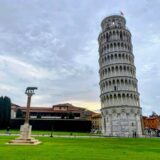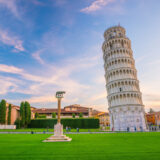Unveiling the Charm of the Leaning Tower of Pisa
The Leaning Tower of Pisa, an architectural marvel that has captured the hearts of millions, stands as a testament to both the grandeur and imperfection of human design. This iconic structure, located in the enchanting city of Pisa, Italy, continues to amaze visitors from around the world. In this article, we delve into the history, architecture, and unique appeal of this leaning wonder.
A Glimpse into History
Origins and Construction
The Leaning Tower of Pisa, or “Torre Pendente di Pisa” in Italian, began its construction in August 1173. Initially intended to be a freestanding bell tower for the neighboring Pisa Cathedral, the tower’s peculiar tilt was not part of the original plan. It was designed by Bonanno Pisano and Gherardo di Gherardo and was constructed using white and grey marble.
The Tilt
The tower’s characteristic tilt, which we all know and love, was a result of unstable foundation soil. In the early stages of construction, the tower began to lean due to the soft ground beneath. This lean went on to become its defining feature, contributing to its fame.
Architectural Marvel
Design and Dimensions
The Leaning Tower of Pisa stands at a height of approximately 56 meters (184 feet) and originally had eight stories. Its diameter at the base is 15.5 meters (51 feet), and it tapers as it ascends. The tower boasts Romanesque architectural elements, such as blind arcades and intricate carvings, adding to its beauty.
Interior
The tower’s interior consists of a spiral staircase with 294 steps that leads to the top. Climbing this staircase is a popular activity for tourists, offering breathtaking views of the city and the surrounding countryside.
The Global Attraction
Tourist Magnet
The Leaning Tower of Pisa attracts tourists worldwide, drawing millions of visitors each year. Its lean, which is approximately 3.97 degrees, makes it a unique and intriguing sight to behold. Tourists often pose for photos, creatively interacting with the tower to create the illusion of either supporting it or pushing it over.
Cultural Significance
In 1987, the tower was designated as a UNESCO World Heritage Site, along with the Piazza dei Miracoli (Square of Miracles) in which it stands. Its inclusion on this prestigious list recognizes its cultural and historical importance.






